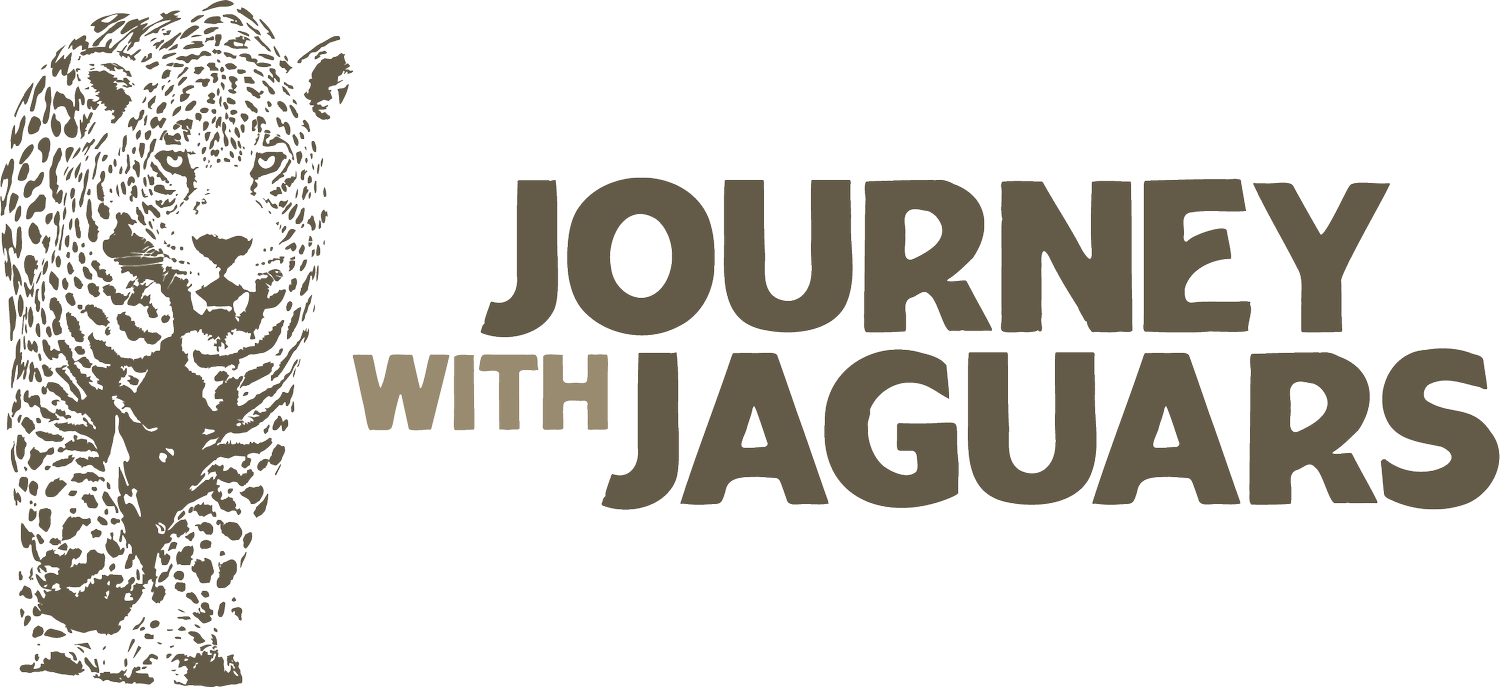In our hands; The Jaguar and the ecosystem
“If you save the top predator in any ecosystem, you save everything that lives with them… so if we save big cats, we can help save ourselves” - Steve Winter, big cat specialist and wildlife photojournalist for National Geographic
Stretching across hundreds of thousands of miles between Brazil, Bolivia, and Paraguay, exists a mosaic of flooded grasslands, savanna, and tropical forest, known as the Pantanal. It is the world’s largest wetland area and seasonal floodplain – and as such boasts extraordinary biodiversity, being home to a wide variety of rare and important plants and wildlife.
Thousands of species thrive in the endless patchwork of habitat; however, the rare and elusive jaguar dominates the food chain, taking pride of place as the apex predator. Along with the puma and the harpy eagle, it is responsible for maintaining populations of all the other animals in a phenomenon known as top-down control. Essentially, they maintain balance in the food chain, and without them, the whole system would collapse.
This ‘trophic cascade’ goes all the way to the bottom – without large carnivores, the populations of smaller carnivores, herbivores, and even plants and soil quality are affected. The jaguar plays many roles in stabilizing this complex system.
Jaguars are opportunistic hunters, directly predating on and controlling populations of dozens of species. Their rich diet consists mostly of small mammals such as opossums, coatis, and agoutis, and larger mammals such as deer, capybara, and tapir, but they are also known to feed on livestock, birds, and reptiles – they will eat whatever they come across. The jaguars in the Pantanal can be upto 30-40% larger than jaguars found in other parts of Central and South America due to the prey size as they commonly feast onunsuspecting caimans on the rivers’ edge .
Research has shown that they also eat smaller carnivores such as the jaguarundi, grey fox, and cats like the margay. These are known as mesopredators, sitting in the middle of the food chain. Without jaguars, their populations would explode, and prey species would suffer as a result.
Through predation, jaguars also moderate competition amongst other animals, allowing more species to share resources and thrive, thereby boosting biodiversity. In systems without an apex predator, smaller species outcompete each other and biodiversity is reduced. This was seen in the grasslands of Texas, where the removal of coyotes resulted in the local extinction of eleven burrowing rodents as one rat species took over.
Many prey species are herbivorous, and without jaguars to control their populations, vegetation would become over-grazed and depleted. Research has shown that the balance between plant species changes in an ecosystem after the removal of the apex predator, due to the increase in seed consumption by herbivores. Furthermore, with healthy vegetation comes healthy soil. In the kelp forests of the North Pacific, the removal of sea otters resulted in an explosion in sea urchin populations, decimating the kelp that supported all other life.
The catastrophic effects of the removal of apex predators have been documented time and time again. The classic example was seen in Yellowstone National Park, where the loss of wolves and mountain lions lead to elk populations rising and destroying the grasslands and vegetation. Once the wolves were reintroduced, elk populations were controlled, and the vegetation returned – along with beavers, bears, birds of prey, scavengers, and plants that had not been seen for decades.
As the apex predator in this system, there are no animals that pose a direct threat to jaguars – except one. Unfortunately, jaguars are suffering due to human actions. By deforesting the tropics, we are encroaching on their habitat and removing vital resources, and in some areas, jaguars are still hunted for sport or to protect livestock.
This behaviour is putting the entire ecosystem at risk, and as jaguar populations decrease, tropical forests are becoming ever more depleted. In our increasingly urbanized world, it is easy to forget that healthy ecosystems are also vital for human survival – providing a wide range of ecosystem services that directly benefit us.
The diverse forests provide indigenous communities with medicinal plants for healthcare, timber for buildings, and a rich supply of game animals. The benefits go much deeper than this – trees are an incredibly important carbon store, taking in carbon dioxide and producing oxygen through photosynthesis, thereby stabilizing atmospheric CO2 and helping us to fight climate change.
Forests are also incredibly important for water supply and flood control. Forested areas have higher rainfall and retain more water, reducing the risk of drought and increasing the water supply for downstream areas. As well as holding water, they stabilize the soil, prevent erosion, and moderate air and soil temperatures, maintaining the environmental conditions we need for agriculture. This means that forests are absolutely essential for food security so that we can continue to farm on the land.
We must also keep in mind the rich cultural significance of the jaguar, which has played a central role in the stories, songs, and prayers of indigenous people for centuries. Ecotourism is another benefit that cannot be ignored – an important source of income for local communities. The Pantanal is one of the last strongholds for the jaguar, and as such has a healthy flow of tourists hoping to catch a glimpse of the elusive predator. Without the jaguar, this money would disappear.
What is undoubtedly clear is that the jaguar is an incredibly important component of the ecosystem, for both wildlife and humanity. Tropical forests are the most biodiverse habitat on earth, and in protecting the mystical forests and wetlands of the Pantanal, we can protect all the species that call this unique ecosystem home.


